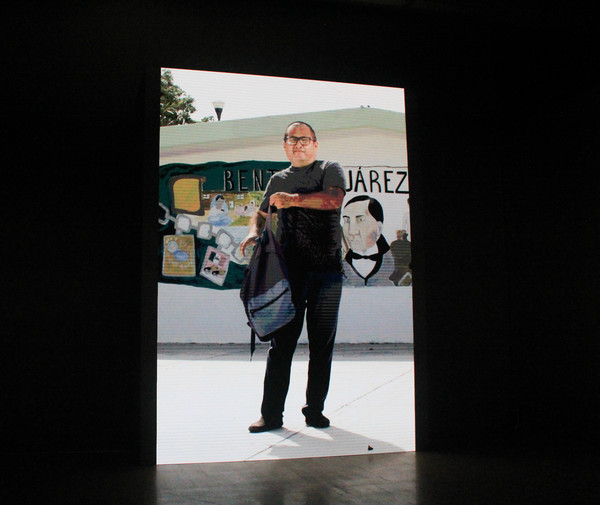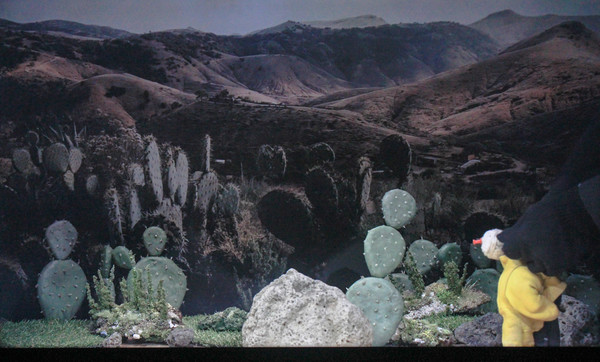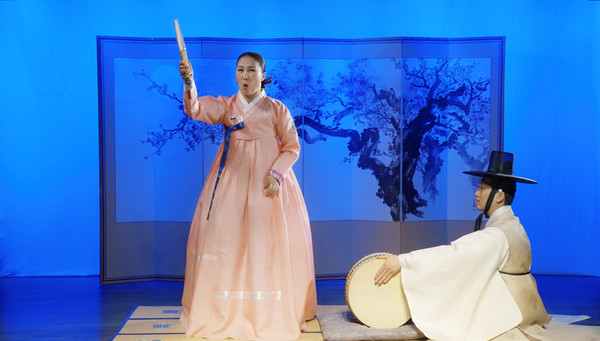A review of *Jung Yeondoo: One Hundred Years of Travels*
BENEATH THE extravagance of a global culture lies the arduous struggles that the diaspora have faced. We often neglect the transcription of the diaspora’s immigrant life, blinded by the separation of time and space. Jung Yeon-doo, one of the most prominent performance and media artists in Korea, focuses on the overlooked narrative of these immigrants. Jung Yeondoo: One Hundred Years of Travels, exhibited at the National Museum of Modern and Contemporary Art Seoul (MMCA Seoul) unravels the stories of the Korean diaspora in Mexico through the themes of foreignness and relocation.

The distinction of the ordinary
From the start of his artistic journey in 1998, Jung Yeon-doo has constantly focused on the relationship between individuality and society[1]. He gained acknowledgment as an artist spotlighting historic incidents through the narratives of the petit bourgeois involved inside. Unique video and performance installations in particular were used as his main technique in this process. Jung recently narrowed the subject of his artwork in accordance with the continuous inclination towards a global culture. By reconstructing immigrant narratives with media installations about local tales and folklore, he strives to highlight the voices of oppressed individuals[2].
Jung Yeondoo: One Hundred Years of Travels is an outcome of such efforts; Jung visited the Yucatán peninsula three times between 2022 and 2023 to build intimacy and to better sympathize with the experiences of the Korean community. As connoted in the title, the exhibition focuses on the process of the Koreans who left Jemulpo Port in Incheon to arrive at the Mexican state Yucatán in the early 20th century[2]. The reinterpretation of this history is presented to the public with the author’s unique style of mixed media works in the exhibition.
A century-old tale
Upon arriving on the basement floor of the MMCA Seoul, a resonant boat whistle echoes through the ears. The prelude of the exhibition is opened with Imaginary Song, which is a compilation of 11 objects in the shape of leaves and red fruits hanging from the ceiling. Each object produces sounds of boat whistles and whispers of different languages, adding to the strangeness created by the visualization of an exotic plant. The bizarre voices are recordings of foreigners currently living in Korea, delivering monologues in various languages such as Spanish, Telugu, and Hungarian[3]. The visual and auditory abnormality provides an indirect experience of the unfamiliarity the Korean diaspora would have faced as they arrived in an unknown time and space.
Jung’s story continues with a pantomime of the mythic tale of the Mexican prickly pear cactus. One Hundred Years of Travels-Prologue is a theatrical installation that depicts how the plant was carried over the Pacific Ocean to put down its roots on Jeju Island. The bland background of deserted mountains blends with the dramatic musical composition to create a tragic atmosphere, symbolizing the obstacles the Korean diaspora faced in the process of migration. Such reconstruction allows the audience to better understand the sorrows of the diaspora in the process of migration.
The narrative reaches its climax in One Hundred Years of Travels, a grand video art installation that depicts how Imperial Japan oppressively exiled Koreans to Mexican plantations. The subtitles and sceneries on the screen directly convey the process, with first-generation migrants testifying their rough life stories. Three additional monitors surrounding the main screen feature video performances of each culture inside the narrative. Korean pan-so-ri, Japanese gidayū bunraku, and Mexican mariachi music on the monitors visually correspond to the main screen. The complementing rhythm transcends the winding journey of migration revolved around death and loss, delving into the mixed world of diaspora[2].

Alienation in a historical context
Despite the agony of the previous generation, it is difficult for descendants to retain the resentment towards oppressors. The two parallel video installations in Generation Portraits configures such disjunction. The audience steps in between two large screens that portray a parent and a child, leading to a natural focus on their relationship and connection. The discordant facial expressions and body language provide a drastic contrast between the generations. This artistic device conveys how the first-generation migrants, who lived as “others,” are separated from their descendants, who possess the elements of “blending” and “assimilation” in their lives[2].
The exhibition concludes with Wall of Blades, a 12 m wall installation composed of bladed tools. The yellow wall provides both a splendid and threatening sensitivity, leading the audience to silently gaze upon the giant structure. The swords filling in the installation are all different types of machetes that were used as farming tools in various regions around the globe. The visualization relates to the imperial connotations of sugar and spice production[2], implying a historical message about the oppression and exploitation caused by colonialization; the tyranny of the ruling class is the fundamental cause for the tragedies of the diaspora.

Foreignness and relocation
When examining a macroscopic social issue, the stories of individual participants are often neglected. In this sense, Jung Yeondoo: One Hundred Years of Travels provides a distinct interpretation of immigration and related problems that society is confronting. Through the translunary installations of the exhibition, the grave subject of emigration is finely dissected so that the audience can easily cope with the general theme. Jung commented that, “The historic material may be quite difficult to handle as an artist, but I hope the audience can lessen the weight of the theme and enjoy the exhibition as a piece of art[4].” His intention is effectively delivered and the audience is “able to sympathize with the universal experiences of immigration and movement,” as commented by the MMCA[5].
This sympathy is then enlarged into a macroscopic story of immigration along with the author’s interpretations of the subject. Although each of the five installations depicts different elements of the displacement in Mexico, the visual and auditory delivery is dark and melancholy. This element in particular copes with the indirect experiences of alienation and separation that the audience faces throughout the exhibition to contemplate about the sufferings of displacement in a foreign country. The tale of Mexico is then enlarged in Jung’s last installation Wall of Blades, which shows that immigration itself was a tragic incident from the start. Human greed and violence are what led to the creation of this concept; the most fearful part, however, is that the experience can be inflicted on anyone, as the Mexican immigrants were people no different from ourselves.

* * *
Jung Yeondoo: One Hundred Years of Travels functions as an artistic device to express the theme of movement across borders, particularly the Korean diaspora in Mexico. The delicate delivery of tragedy in the narrative provides a vivid experience for the audience, showing that the individuals who were inside the event were no different from the viewing audience themselves. The real tragedy, in this sense, is the destruction of the ordinary lives.
Period: 2023.09.06-2024.02.25
Entry Hours: 10:00-18:00
Admission Fee: ₩2,000 (Free for those under 24)
Address: 30, Samcheong-ro, Jongno-gu, Seoul
[1] Seoul Culture Today
[2] Jung Yeondoo: One Hundred Years of Travels: Official Brochure
[3] CNB Journal
[4] Yonhap News
[5] Newsis

